 | Back to e-WV
| Back to e-WV
 The West Virginia Encyclopedia
The West Virginia Encyclopedia
 | Back to e-WV
| Back to e-WV
 The West Virginia Encyclopedia
The West Virginia Encyclopedia
Established in 1937 as part of the New Deal, the Farm Security Administration sought to help needy farmers during the Great Depression. As part of the agency’s efforts, FSA photographers traveled the country, capturing images that called attention to rural poverty. This online exhibit is based on earlier work by Betty Rivard, who created an exhibit with funding from the West Virginia Humanities Council to the Coal Heritage Highway Authority. This exhibit features the work of two photographers, Ben Shahn and Marion Post Wolcott, whose work is preserved at the Prints and Photographs Division of the Library of Congress.
In 1935, Shahn traveled through West Virginia, starting in the northern coalfields and then visiting the model community in Eleanor, Putnam County. He then visited Logan and Mingo counties before crossing into Kentucky. Three years later, Wolcott followed part of Shahn’s trail, starting in the northern coalfields before traveling to Omar, Logan County, then to Bluefield and along the Tug River from Mohegan to Davy. Both photographers focused on the everyday life of coal miners and their families, and their photographs offer insight into the resiliency of West Virginians during hard times. Many of the images endure as masterpieces long after the era during which they were made.
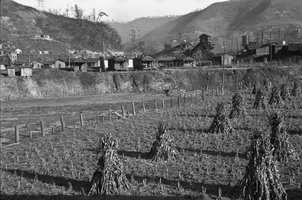
This photograph shows a field of corn stalks next to a coal camp and the hillsides that have been timbered.
Photograph by Ben Shahn
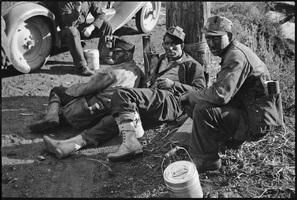
Coal miners in Williamson relax by the side of the road after work. Many miners didn’t have automobiles, so they may have been traveling by the truck that can be seen in the background.
Photograph by Ben Shahn
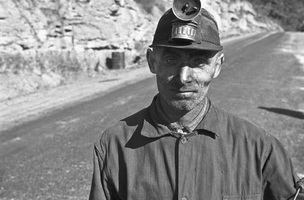
Freeze Fork was a coal camp in Logan County. This miner, unidentified by photographer Ben Shahn, has since been identified by family members as Clyde Hood.
Photograph by Ben Shahn
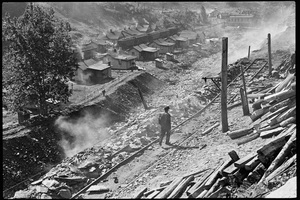
The air in the coal camp is thick with smoke and soot from burning slag heaps, train locomotives, and household coal stoves.
Photograph by Ben Shahn
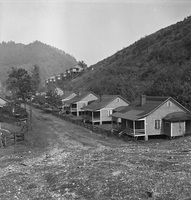
The Ford Motor Company owned this town but shut it down after miners attempted to unionize. About 1,000 men once worked there. Residents of neighboring towns salvaged what they could from the vacant homes.
Photograph by Marion Post Wolcott
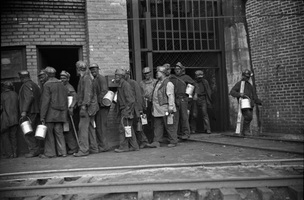
Post Wolcott took a series of photographs at this mine and the coal camp at Capels.
Photograph by Marion Post Wolcott
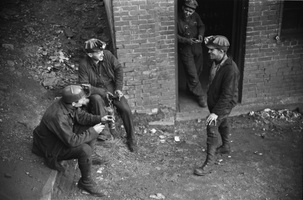
This photo offers a rare view of coal miners talking, apparently with no regard for the camera.
Photograph by Marion Post Wolcott
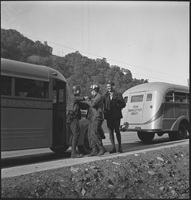
Bus and rail service were available in some areas for miners who commuted to work.
Photograph by Marion Post Wolcott
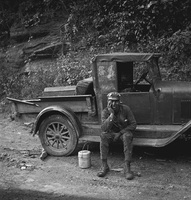
Miners paid the owner of this truck 25 cents each for a ride home. There are dollar signs on the windows, perhaps to advertise the service.
Photograph by Marion Post Wolcott
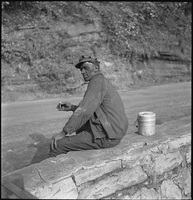
A miner rests on a wall after his shift in the mine.
Photograph by Marion Post Wolcott
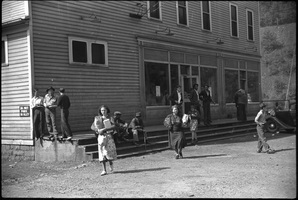
Company stores were a gathering spot for residents of coal communities.
Photograph by Marion Post Wolcott
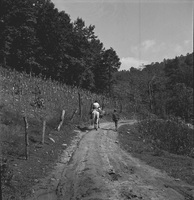
A couple carries their purchases on horseback as they return from the store on payday.
Photograph by Marion Post Wolcott
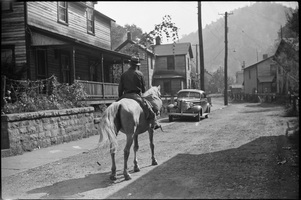
In many cases, such as in Capels, there were small farms adjacent to coal camps. Some miners lived on these farms and supplemented what they earned with what they could grow on the farms.
Photograph by Marion Post Wolcott
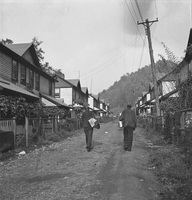
These men lived close enough that they could walk home. Some of these houses in Capels have been maintained or restored and are still occupied.
Photograph by Marion Post Wolcott
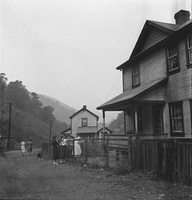
The women in this photo are dressed up, perhaps for their walk to the company store and back. Miners’ wives often led difficult lives and relied on each other for support.
Photograph by Marion Post Wolcott
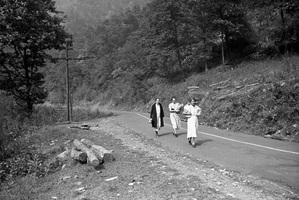
Three women walk down the road near Mohegan in McDowell County.
Photograph by Marion Post Wolcott
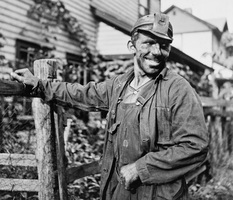
A coal miner who had emigrated from Poland returns to his home. Miners were recruited from Europe and from the South to work in the mines.
Photograph by Marion Post Wolcott
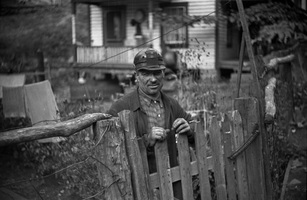
Miners brought their home cultures with them and created a kind of melting pot in the coal camps. In some cases, men from Europe came by themselves and stayed in clubhouses before their wives and children joined them.
Photograph by Marion Post Wolcott
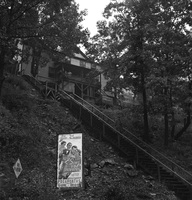
Many coal camps had housing that was segregated by race and ethnicity. However, miners worked closely together in the mines and relied on each for their lives.
Photograph by Marion Post Wolcott
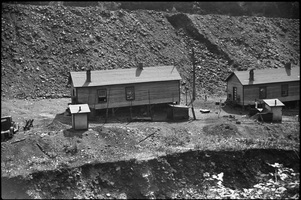
Some children who grew up in the coalfields remember moving frequently as their families sought to upgrade their housing.
Photograph by Marion Post Wolcott
To see more of the FSA photographs, go to memory.loc.gov/ammem/fsahtml/fahome.html